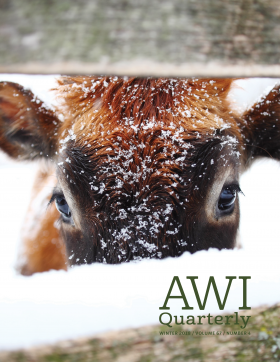Volume
67
Number
4

About the Cover
Few farm animals in this country live out in the open—instead living in vast barns in close confinement. When such facilities catch on fire, the animals are often trapped. From 2013 to 2017, more than 2.7 million farm animals died in the United States as a result of 326 barn fires. The most common culprit is a faulty heating device. A new AWI report—Barn Fires: A Deadly Threat to Farm Animals—takes a close look at the circumstances behind these tragic events and outlines steps all farms can take to prevent them.